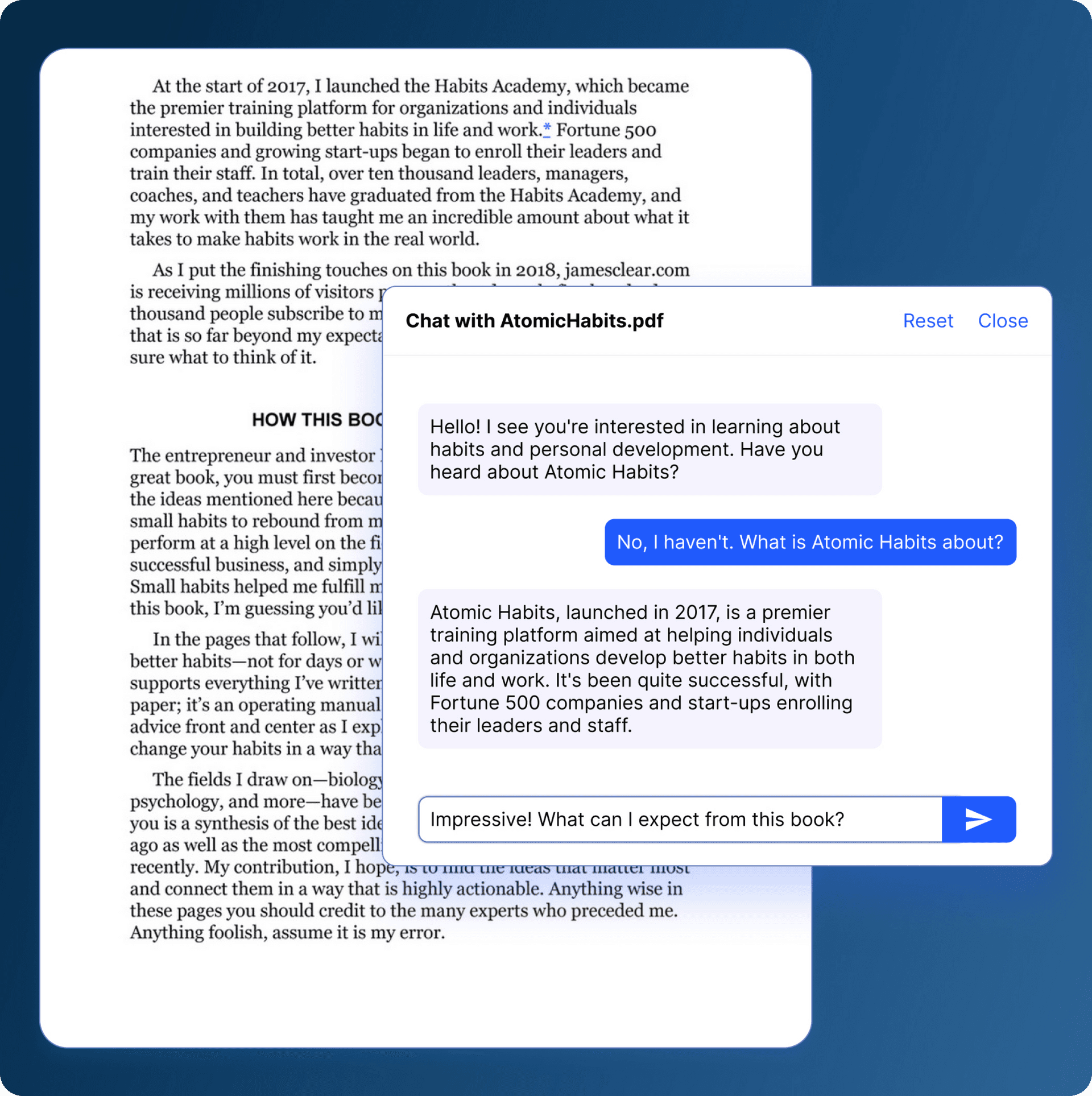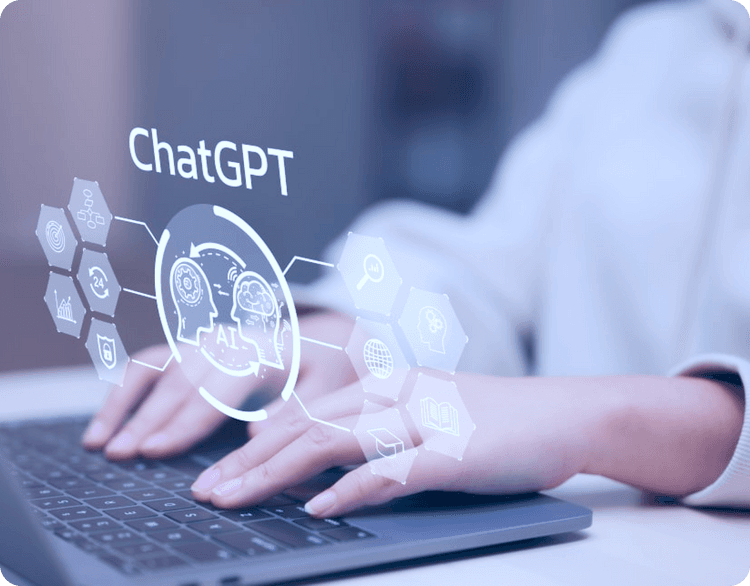Understanding GPT-4 Turbo
GPT-4 Turbo, the latest iteration of the Generative Pre-trained Transformer series, represents a significant leap forward in the realm of language understanding and generation. Driven by advanced deep learning algorithms, GPT-4 Turbo excels in comprehending context, making it an ideal candidate for engaging in meaningful conversations with complex datasets, including PDF files.

Use Cases
A few potential applications of GPT-4 Turbo are:
Document Summarizer:
One of the primary applications of GPT-4 Turbo is its ability to distill the essence of lengthy documents, such as research papers or reports, into concise and coherent summaries. Harnessing its expansive knowledge base, the model can extract crucial information, condensing the content into easily digestible insights. This functionality proves invaluable for professionals who need to quickly grasp the key points of a document without delving into every detail.
PDF Chat:
By leveraging the model's contextual understanding, users can engage in a conversational interface to request and receive precisely the information they seek, streamlining the process of data extraction.
Proposal Generator:
GPT-4 Turbo's proficiency extends to extracting specific information from PDF files. Consider a scenario where a legal professional needs to retrieve particular clauses from a lengthy contract. The model can be used to develop a new proposal using the context and information provided in the PDF.
Implementation Steps
Before initiating a conversation with GPT-4 Turbo, it is essential to pre-process the PDF files. This involves converting the PDF content into a format the model can comprehend. Various tools can be employed for this purpose.
This can be done in two ways:
1. Extract text from PDF, and pass it to the API along with the chat content.
2. Generate embeddings on PDF. Query the OpenAI Embeddings API based on the chat content and the response will be a handful of relevant documents/pages. Which is similar to a similarity search on the document.
Integration with GPT-4 Turbo is facilitated through OpenAI's user-friendly API. Developers can use this API to send conversational prompts along with the pre-processed PDF content, enabling the model to generate human-like responses.
To extract information or summaries from the PDF, users can engage in a conversation with GPT-4 Turbo by posing context-aware queries. Instead of merely asking for a summary, users can specify the sections or topics they are interested in, enhancing the precision of the model's responses.
GPT-4 Turbo excels in handling multi-turn conversations, allowing users to refine their queries based on the model's responses. This iterative process ensures that the user obtains the most relevant and accurate information from the PDF files.
Limitations
Streamlined access to key information in large documents enhances efficiency in data extraction from legal, academic, or technical documents. It also improves collaboration by facilitating interactive discussions around document content.
However, GPT-4 Turbo's responses are based on patterns in the training data and might not always capture nuanced or domain-specific details. The model's understanding is limited to the context provided, and it may struggle with ambiguous queries or complex language structures.
Limitations of GPT-4 Turbo:
Hallucinations in ChatGPT 4 Turbo:
Users reported instances of ChatGPT 4 Turbo generating hallucinatory responses, blurring the line between fiction and reality, and raising concerns about the model's grasp on factual accuracy.
ChatGPT 4 Turbo lies confidently:
Language Models like ChatGPT 4 Turbo exhibit a concerning tendency to confidently provide inaccurate information, highlighting the challenge of ensuring truthful outputs and the need for improved reliability in AI systems.
Misinformation from the LLMs:
Instances of misinformation propagated by Language Models have sparked debates on the ethical implications of AI-generated content, emphasizing the importance of robust safeguards to prevent the unintentional spread of false or misleading information.

Potential Enhancements
As GPT-4 Turbo continues to evolve, potential enhancements could further augment its utility in dealing with PDF files. Improved handling of complex document structures, better recognition of domain-specific terminology, and enhanced summarization capabilities are areas where future developments could make this tool even more indispensable.
Integration with Other Tools
To maximize the potential of GPT-4 Turbo in dealing with PDF files, developers can explore integration with other tools and technologies. For instance, coupling GPT-4 Turbo with Optical Character Recognition (OCR) technology can enhance its ability to understand scanned documents, making it a more versatile solution for a broader range of PDF formats.
Furthermore, integration with cloud-based storage and collaboration platforms can facilitate seamless communication between GPT-4 Turbo and document repositories. This would enable users to directly interact with PDF files stored in platforms like Google Drive or Dropbox, making information retrieval even more efficient.
Consider a scenario where a team collaborates on a complex project, and the project documentation is stored in a shared Google Drive folder. By integrating GPT-4 Turbo with Google Drive, team members can engage in natural language conversations to extract specific details or summaries from the project documentation without the need to manually open and search through each document.
By exploring these integrations, GPT-4 Turbo can become an integral part of an organization's knowledge management and collaboration ecosystem, streamlining workflows and enhancing productivity.

Future Implications
Looking ahead, the integration of advanced language models like GPT-4 Turbo with document processing tools holds immense potential for transforming various industries. In the legal sector, attorneys could utilize this technology to rapidly review and analyze extensive legal documents, enabling more informed decision-making. In academia, researchers could leverage GPT-4 Turbo to sift through vast amounts of literature and extract key findings for their studies.
Additionally, the application of GPT-4 Turbo in education could revolutionize how students interact with complex course materials. Imagine students engaging in conversational queries with the model to better understand dense textbooks or research papers, fostering a more interactive and personalized learning experience.
Conclusion
Looking ahead, the integration of advanced language models like GPT-4 Turbo with document processing tools holds immense potential for transforming various industries. In the legal sector, attorneys could utilize this technology to rapidly review and analyze extensive legal documents, enabling more informed decision-making. In academia, researchers could leverage GPT-4 Turbo to sift through vast amounts of literature and extract key findings for their studies.
Additionally, the application of GPT-4 Turbo in education could revolutionize how students interact with complex course materials. Imagine students engaging in conversational queries with the model to better understand dense textbooks or research papers, fostering a more interactive and personalized learning experience.




